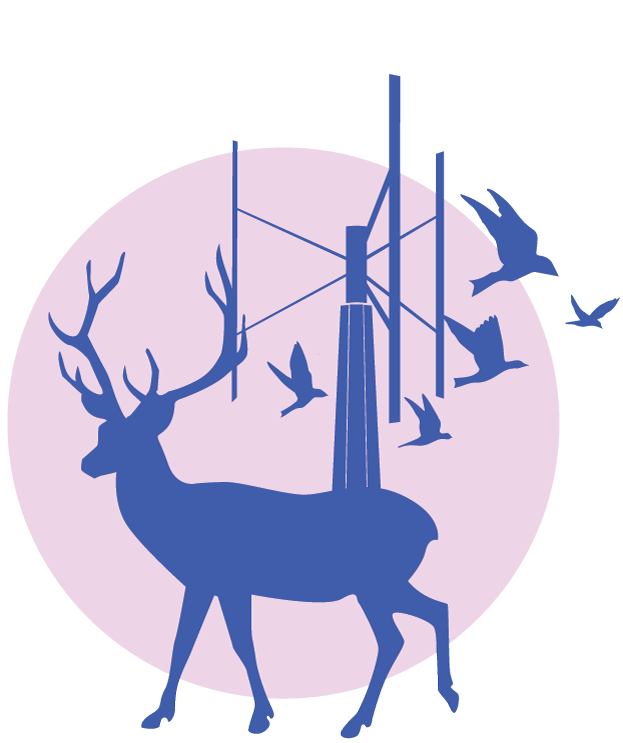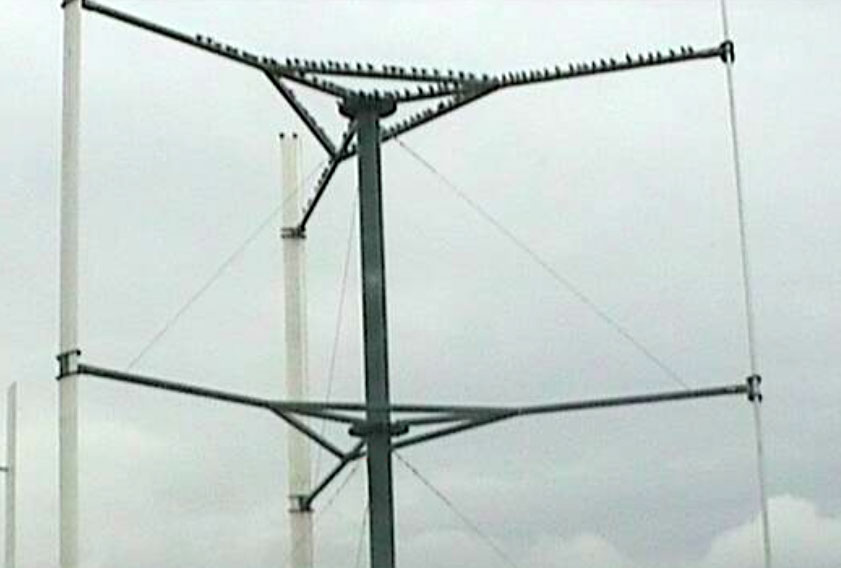
H-type turbines like Wind Harvesters installed in the understories of existing wind farms will not significantly impact wildlife.
Habitat Loss
Infilling existing wind farms with H-type turbines may be the least damaging, large-scale energy source currently available. Placing H-type turbines under and around tall, propeller-type turbines results in minimal habitat loss in places like California, where wind farms are sited on rangeland or in deserts. In these places, it is not necessary to build new main roads and fences. Additionally, there is no need for new transmission lines when a project is a “capacity factor enhancement” project.

Impact on Birds
Wind Harvesters are three-dimensional in shape and have slower-moving blades than propeller-type turbines. Scientists hypothesize that this should make them safer for wildlife. Arrays of Wind Harvesters should avoid the problems that propeller-type turbines have with birds of prey. They should be more wildlife-friendly, especially to eagles, condors, hawks, and other soaring birds, in the following ways:

Detection and Avoidance

Impact on Bats
In general, bats don’t like to fly when it’s windy because it costs them energy, and any flying insect is harder to catch. However, it is a documented issue that traditional wind turbines can harm some species. Nobody has ever evaluated H-type turbines’ impacts on bats with scientific rigor. However, the following hypotheses make intuitive sense. In addition, any Wind Harvester installed in a bat habitat includes a “chirp” detection system that detects bats in the area and temporarily turns off our turbine.



